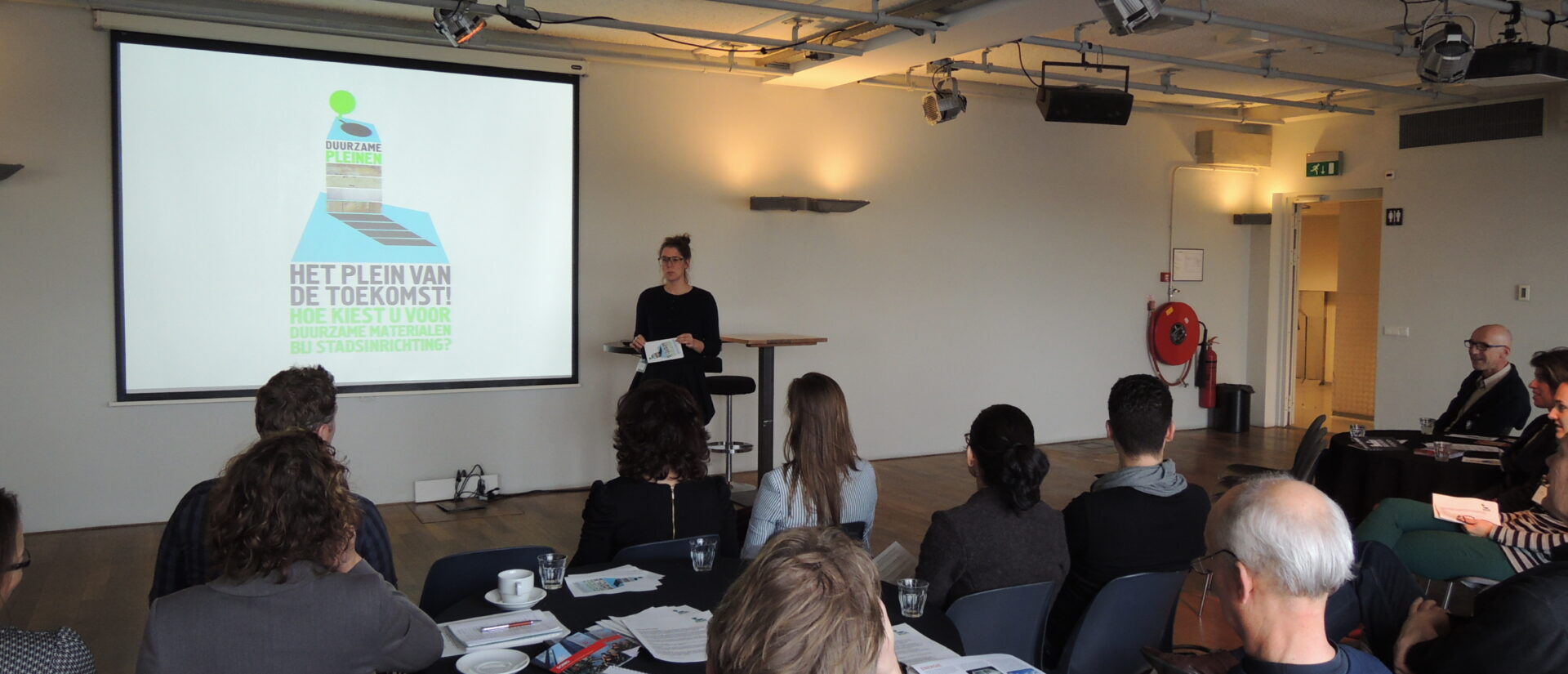
The square of the future – comprehensive sustainability
Natural stone, concrete, steel and wood; these are materials that can be sustainable or unsustainable in various ways. But what does sustainable mean exactly?

The origin of the material, labour conditions and environmental impact of transportation are important issues nowadays, and they were the focus of the ‘The Square of the Future’ meeting held in Pakhuis de Zwijger in Amsterdam on Monday 9 December. The venue was filled with municipal purchasers, politicians, architects and consultants. The first associations with the term ‘sustainable’ were found to be durability, a low maintenance level, recycling and reuse, child-friendliness and other aspects. The participants were interested in the topic, but warned of being overly enthusiastic because in which case all good intentions could result in empty lots.
Nevin Özütok, alderwoman in Amsterdam East, warmed up the audience with her practical experiences in the development of the sustainable Beukenplein square. Based on a presentation which showed all the lessons learned in the Duurzame Pleinen (opens in new window) (Sustainable Squares )project and a presentation by Liesbeth Unger, coordinator of the Sustainable Squares project, the event provided concrete handles for including sustainability in the initial, concept and development stages of the (re)development of squares. The meeting then focused on natural stone, with Toon Huijps (chairman of the Responsible Stone Program) and Leonie Blokhuis (advocacy officer at Stop Child Labour) discussing the challenges they face in increasing the sustainability of production chains in their specific fields. The event was concluded by Dirk de Jager, alderman in Amsterdam West, who confirmed the importance of sustainable procurement and underlined the necessity of focusing on social aspects in the materials chain.
Local sustainability
The relevance of involving local residents as early as the design process was also stressed on several occasions. This way the concept is not just based on the sustainability of materials, but also on the sustainability of use. In the development of the Beukenplein in Amsterdam the residents could vote whether the square should remain a traffic square or be developed into a public square, for instance. They also had access to a forum during the various stages of the design process where they could share their ideas for the redevelopment. Businesses in the immediate surroundings played a role with regard to employment, and it was also taken into account that the redevelopment should not result in a reduced turnover for local companies. The concept of sustainability at a local, regional, national and international level slowly spread over the course of the meeting.
Zooming in on natural stone
Toon Huijps and Leonie Blokhuis were unable to guarantee that the production chain of natural stone up to the factory is actually sustainable. Stone quarries in China and India show lots of child and hard labour, which is in violation of international labour standards. So is it better to purchase natural stone from countries such as Spain so we have more control over the matter? The benefits and disadvantages were evaluated carefully. Natural stone from Spain and Norway has a longer durability, for instance, but the price is three times higher. On the other hand, the environmental impact of the transport of material from China is many times larger. Nonetheless it would be undesirable to ignore these countries, because by choosing Chinese and Indian stone while constantly demanding a focus on sustainability, companies are required to map the origin of their products and raw materials and prioritise improving local labour conditions.
The meeting facilitated a participative brainstorming session on the ‘Square of the Future’; a square that offers a long durability, properly realises its social aspects, is green and uses high-quality, environmentally-friendly and labour-friendly materials. Sustainability can be found both near and far. Many participants’ eyes were opened to the necessity of focusing on labour conditions within the chain. Nevertheless it remains a challenge to take heed of all human, ecological and economic aspects both inside and outside of the Netherlands.
Partners
-
Responsible Stone
Related content
-
F. WeyzigPosted in category:PublicationF. Weyzig
-
 Dutch State accused of failing to prevent genocidePosted in category:Case
Dutch State accused of failing to prevent genocidePosted in category:Case Lydia de LeeuwPublished on:
Lydia de LeeuwPublished on: -

